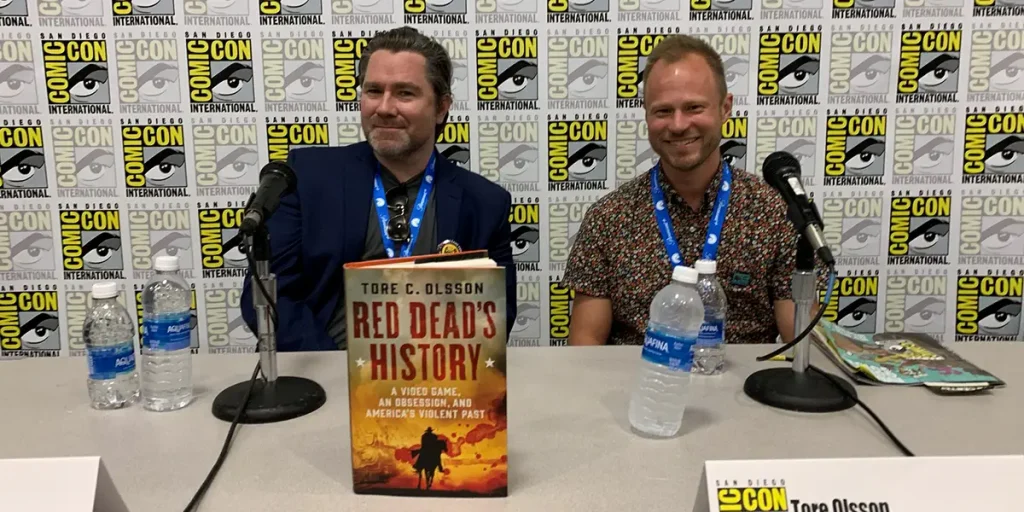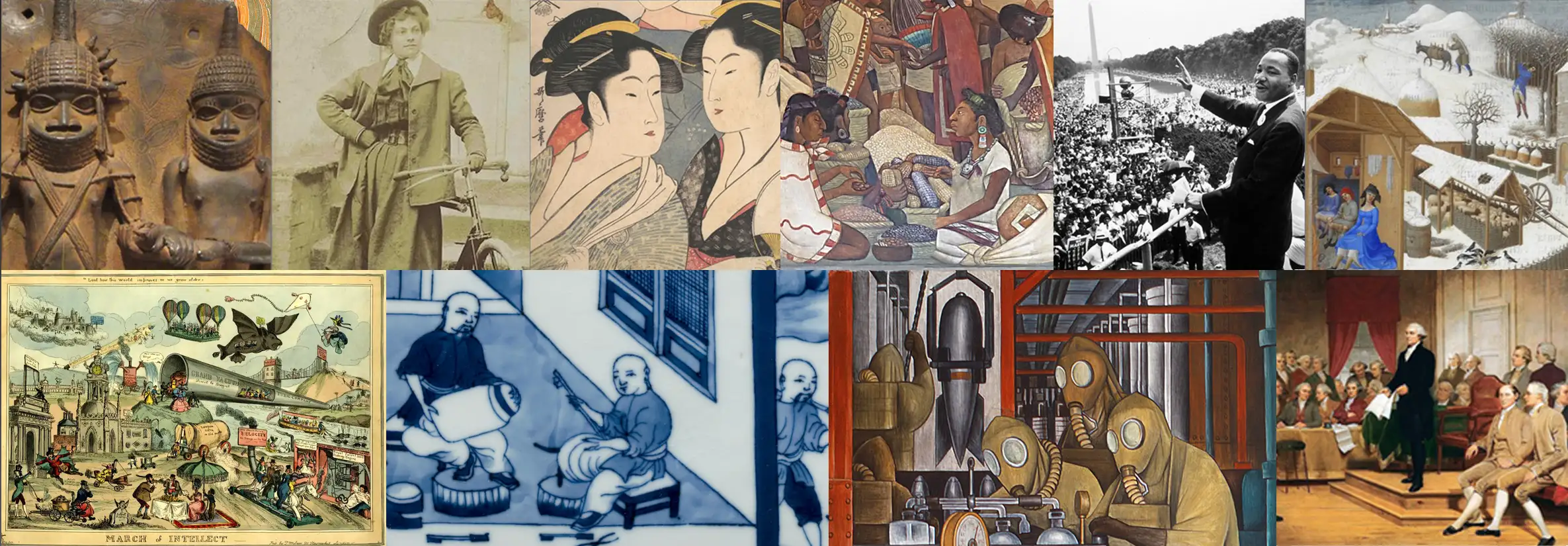Red Dead’s History Launches with Film Premiere, National Coverage

Tore Olsson’s innovative history class inspired by the popular “Red Dead Redemption” video game series has been a hit with Big Orange students for the past few years. He now launches his new book inspired by the class, Red Dead’s History: A Video Game, An Obsession, and America’s Violent Past.
The book is already attracting national attention. Olsson and Roger Clark—who plays the lead role in Red Dead Redemption II and narrates the book’s audio edition—spoke and signed copies of the book and the game during this summer’s San Diego Comic-Con, one of the largest annual popular-culture events in the world.
“Participating as a speaker at Comic-Con was truly dreamlike,” said Olsson, associate professor and director of graduate studies in the UT Department of History. He and Clark spoke to a packed room of around 480 people during a panel session. “We answered thoughtful audience questions about college teaching, how video games can be a gateway to serious learning, and how questions of race and gender are subjects becoming more central to game narratives. Though I’ve given many public talks before, I’ve never seen a more rapt audience.”
More recently, the Wall Street Journal reviewed Red Dead’s History on the front of its book section, calling the book “innovative and highly engaging.” The Chronicle of Higher Education shared the story of how the class and the book “made history cool again.” The cable news channel C-SPAN will have a camera crew at Olsson’s book launch event at 6 p.m. Thursday, August 15, at the East Tennessee History Center. The event will also feature the premiere of the Land Grant Films documentary about his “Red Dead History” class.
Like the class that inspired it, the book examines how well the “Red Dead” games fare as recreations of history, exploring the real violence and political turbulence between 1870 and 1920, and what can be learned to understand contemporary American culture.
“Red Dead Redemption II, like most best-selling games today, places violence front and center to its entertainment formula,” said Olsson. “The America of the late 1800s was indeed a violent place—yet for different reasons than shown in the video games.
The game usually offers a stereotypical “wild west” style of competition involving violence: bullets fly during robberies, over personal grudges, or from too much whiskey.
“Real American violence was instead usually wound up with big social dilemmas,” said Olsson. “Particularly the questions of big business and its control over regular people, and whether the US would realize its post-Civil-War promise of racial equality. These were hotly contested issues, and ones that often spurred bloodshed.”
Many elements in the video game are inspired by real-world people and places. The city of Saint Denis, for example, is a stand-in for New Orleans circa 1899.
“The game does a nice job capturing the architecture and the human diversity of the city, but it falls short on many other questions,” said Olsson. “In the book, I explore the place of Italian immigrants within the city, and what it looked like when outlaws and the police traded fire. On both topics the game diverges from the reality of turn-of-the-century New Orleans.”
The book follows a similar format to Olsson’s class, looking at different geographic regions and key thematic topics within each. In “The West,” Olsson discusses cowboys, railroads, and the Pinkerton agency. In “The Deep South,” he looks at the history of the Ku Klux Klan, chain gangs, and women’s suffrage.
Olsson wanted the book to be accessible and engaging to a wide, non-academic audience and wrote it with storytelling in mind, often infusing it with his teaching persona and voice, resulting in a more conversational approach that he says might give students who took his class some “déjà vu” while reading it. Still, it gave him the chance to delve much deeper into the subjects than he could in a classroom setting.
“With the book there’s no exam at the end of the semester, so I could take more liberties in layering new information without worrying about what students could retain for an exam,” he said. “The book is in many ways even richer in content than the class.”
By Randall Brown
